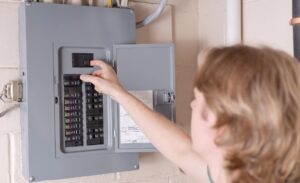Solar panels, like all electronics, are subject to voltage surges that can damage components and increase downtime. Surge protectors can help keep systems running and profitable.
Think of a home or office computer. In addition to the desktop or laptop computer, there might be an external monitor, speakers, and even a printer. That means there are a lot of components that can’t be plugged into a wall outlet, so most people buy a power strip. But a power strip isn’t just a convenient way to plug a bunch of things into one outlet; it actually helps protect those electronics from the damaging effects of power surges.
A power surge, also called a voltage transient, is a brief increase in electrical voltage that is much higher than normal. For example, a standard home or office voltage is 120 volts. Voltage can be thought of as electrical pressure. So, just as very high water pressure can cause a garden hose to burst, very high voltage can damage electronics. These surges can come from natural sources, such as lightning, as well as from internal or external equipment on the grid.
An overcurrent protector helps prevent damage to electronic equipment by diverting excess electricity from a “hot” power line to a ground wire. In most overcurrent protectors, this is accomplished with a metal oxide variable resistor (MOV), a piece of metal oxide connected to the power and ground lines by two semiconductors.
Solar energy needs surge protection.
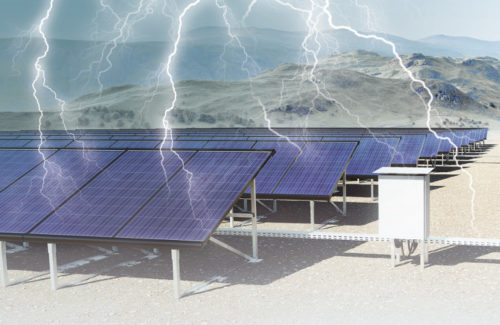 Solar arrays are also electronic devices and are therefore susceptible to the same potential for damage from electrical surges. Solar panels are particularly vulnerable to lightning strikes because of their large surface area and exposure to exposed areas, such as rooftops or ground-level installations in open areas.
Solar arrays are also electronic devices and are therefore susceptible to the same potential for damage from electrical surges. Solar panels are particularly vulnerable to lightning strikes because of their large surface area and exposure to exposed areas, such as rooftops or ground-level installations in open areas.
“California, where the solar industry has enjoyed its fastest growth, coincidentally has some of the lowest risk of lightning strikes in the United States,” said Dan Silawa, senior business development manager for renewable energy at Phoenix Contact, a lightning protection provider. “As solar installations move further out of the California market, the potential impact of array failure due to lightning strikes has increased. This has been most evident as array installations move into the Southeast, one of the most lightning-prone regions of the country.”
Solar contractors don’t always know if they’re building in a lightning-prone area. Alltec, which also provides lightning detectors, is integrating data from the U.S. Lightning Detection Network into a free tool that allows solar contractors to assess the lightning risk of their projects.
Lightning is about 50,000 degrees Fahrenheit—five times hotter than the sun—so it’s no surprise that it can be harmful to solar energy equipment.
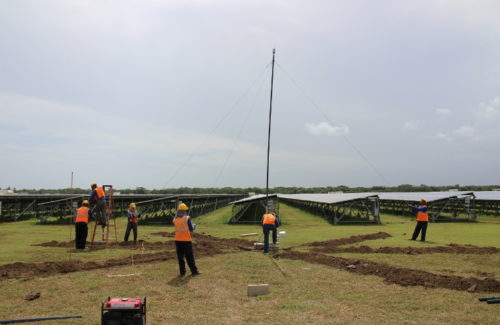
Alltec Lightning Protection
“If lightning strikes solar panels directly, it can burn holes in the equipment or even cause explosions, destroying the entire system,” said Ethan Pace, SPD product manager at Alltec.
But the effects of lighting and other voltage surges aren’t always obvious. The secondary effects of these events affect not only key components like modules and transformers, but also monitoring systems, tracking controllers and weather stations, Silawa says.
“Secondary impacts are often the least recognized risks and are often perceived as generation failures, child deaths or manufacturing defects,” he said. “Losing a PV module means only losing the string, while losing a central inverter means losing power generation for a large section of the plant.”
Installation of surge protectors
Since all electrical equipment is susceptible to voltage surges, SPDs are available for all components of a solar panel array. Industrial versions of these devices also use metal oxide variable resistors (MOVs) along with other sophisticated equipment to conduct the surge to ground. Therefore, SPDs are generally installed after a stable grounding system has been established.
“Think of a single-line electrical diagram of your facility and cascade SPDs from utility service to group equipment,” said Pace. “Specify strong protection at the main entrances to protect against large emergencies and smaller units along critical paths to the equipment endpoint.”
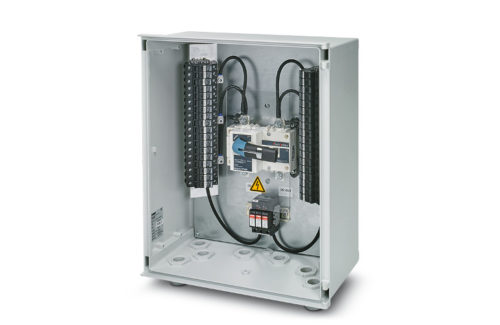
The Phoenix Contact DC SPD is installed in a manifold box.
SPDs must be installed throughout the AC and DC power distribution of the solar array to protect critical circuits. SPDs must be installed on both the DC inputs and AC outputs of the system inverters and deployed with a ground reference on both the positive and negative DC lines. AC protection must be deployed on each power conductor to ground. The collector circuits, as well as all control circuits and even the tracking and monitoring systems, must also be protected to prevent interference and data loss.
When it comes to commercial and utility systems, Silva suggests using the 10-meter rule. For installations with DC cables less than 10 meters (33 feet), the solar surge protector should be installed at a convenient point such as the inverters, combiner boxes, or closer to the solar modules. For installations with DC cables longer than 10 meters, the surge protector should be installed at both the inverter and power module ends.
Home solar systems with microinverters have very short DC cables, but longer AC cables. An SPD installed in the junction box can protect the home from array surges. An SPD on the main panel can also protect the home from array surges, as well as those from utility power and other indoor equipment.
In any system of any size, SPDs must be installed by a licensed electrician in accordance with the manufacturer’s recommendations and installation and electrical codes for maximum safety and effectiveness.
Additional steps, such as adding lightning protection air terminals, can be taken to further protect the solar array from lightning strikes specifically.
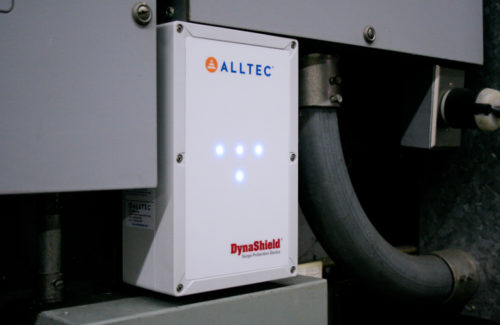
SPD from Alltec
“People have to decide what risk is acceptable to them,” said Jim Grasty, Alltec’s director of engineering for systems and services. “If there are requirements for service continuity, you need lightning protection. If there are no requirements, some may choose not to use it.”
Even the most robust surge protection systems have their limitations. For example, surge protection systems cannot prevent physical damage from direct lightning strikes.
“This is the best that modern science can do,” Grasti said.
Taking into account the costs
Although surge protection technology has been around for some time, it has yet to find a permanent presence in the U.S. solar industry. Grasty attributes this to cost.
“We understand that solar developers have to be very cost-conscious and want to keep the initial capital as low as possible, but all they do is shift the cost to the maintenance budget,” he said. “Who has to pay for it trickles down.”
He sees greater opportunity for surge protection in the residential and small commercial markets because the owner-operator is the buyer. And it’s much less expensive to equip a home with surge protection than to install a large array of solar panels, although surge protection offers a more significant return on investment for utility projects.
“If they’re getting a certain amount of damage a year and then they apply a surge suppression and that amount goes down to zero, they can see that recovery right away,” he said.
Montana Bush, chairman and CEO of Georgia-based solar contractor Alternative Energy Southeast, feels the cost pressure of adding surge protection in the competitive residential solar industry.
“We typically recommend this product to customers who are very cautious or who want to make sure they have all their needs covered,” he said. “However, the tax credit helps cover those needs. I think it’s smart for installers to research whether they’re in a lightning-prone area and at least make the recommendation.”
But Silwa says protecting the power supply is crucial to ensuring the viability of solar energy.
“Solar arrays are expected to operate with a known failure rate for 25 years or more,” he said. “Random failures due to surges and fluctuations reduce financial returns. Loss of reliability also reduces the value of solar generation to grid operators. I think the financial and reliability risks from surges and fluctuations are not recognized here in the U.S. market, even though comprehensive surge protection is commonly used in the global market.”



